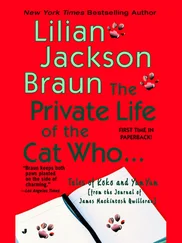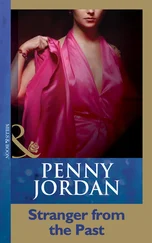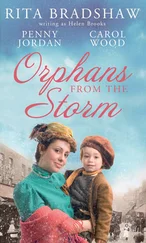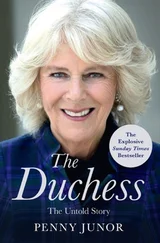The Troubled Life of the House of Windsor
For Lupus
Cover
Title Page PENNY JUNOR The Firm The Troubled Life of the House of Windsor
Dedication For Lupus
List of Illustrations
Introduction
1 An Extraordinary Way to Live
2 Keeping House
3 Winds of Change
4 188 Recommendations
5 Communication
6 Lessons Learnt
7 Diana
8 The Duty of an Heir
9 Not Waving: Drowning
10 Camilla and the Future
11 From Bad to Worse
12 What If?
13 Mrs PB
14 Lord Blackadder
15 Battle of the Palaces
16 Master of Spin
17 Planes, Trains and Automobiles
18 Beyond the Dreams of Avarice
19 All the King’s Horses – The Private Queen
20 The Sport of Kings
21 Representing the Nation to Itself
22 Coming to Grief
23 Pomp and Ceremony
24 Charity Begins at Home
25 The Rough with the Smooth
26 A Moment of Madness
27 The Key to the Door
28 Community Spirit
29 A Thankless Task
30 Changing the World
31 Maundy Thursday and Fixtures in the Calendar
32 Pressing the Flesh
33 Crossing Continents
34 Gongs and Garden Parties
35 Voluntary Service
36 Media Menace
37 Temporary Stand-off
38 Burrell
39 Allegations and Denials
40 Bear Traps
41 In the Genes
42 Conclusions
43 The Way Ahead
44 The Camilla Factor
Plates
Bibliography
Index
Acknowledgements
Keep Reading
About the Author
Copyright
About the Publisher
The King, Queen and Princess on the balcony (Rex)
Lady Diana Spencer in see-through skirt (Rex)
The Royal Family on the balcony with Diana and young Princes at Trooping the Colour (Tim Graham)
The Family on the balcony during the Golden Jubilee (Tim Graham)
The Party at the Palace (Tim Graham)
The Prince of Wales shooting with Michael Fawcett (Eddie Boldizsar/Rex)
Paul Burrell carrying a corgi (Tim Graham)
The Queen arriving in Saudi Arabia on Concorde (Tim Graham)
The Queen and Prince Philip in the Gold State Coach (Tim Graham)
Prince Philip in bearskin (Les Wilson/Rex)
Queen Elizabeth the Queen Mother with Irish Guards and wolfhound (Tim Graham)
The Queen at the Windsor Horse Show (Les Wilson/Rex)
The Kiss on the balcony (Tim Graham)
Charles and Diana in Korea (Tim Graham)
The Princess of Wales with children in her arms (Tim Graham)
Princess Anne standing by a cot (Tim Graham)
Diana crouching to talk to hospice patient (Tim Graham)
Diana in surgical mask (Rex)
Prince William with hand to mouth for 18 thbirthday (Rex)
Queen Elizabeth II’s coronation (Rex)
Queen Mother’s funeral (Tim Graham)
Prince William over a hot stove (Rex)
Prince William in school uniform with Union Jack waistcoat (Rex)
Prince Edward with Sir Cliff Richard at It’s a Royal Knockout (Rex)
Princes William and Harry playing polo on bicycles (Les Wilson/Rex)
The Queen wrapped up against the weather with a labrador and spaniel (Greaves/Rex)
The Queen with Princess Anne and Zara Philips, all on horseback (Tim Graham)
A tearful Queen leaving the 9/11 memorial service (Tim Graham)
The Prince of Wales and Camilla Parker Bowles on the evening their engagement was announced (Rex)
Prince Charles with Lady Diana Spencer after their engagement (Tim Graham)
Prince Charles and Prince William on the 50th anniversary of VJ Day (Tim Graham)
Prince Charles and Prince William with cows on the Home Farm (Les Wilson/Rex)
Prince Harry being restrained outside a London nightclub (David Abiaw/Rex)
The Princess of Wales during the Panorama interview (Rex)
The Queen at the Derby – both glum and jubilant (Les Wilson/Rex)
The Queen and Duke of Edinburgh meeting flag-waving children (Tim Graham)
The Queen arriving at Bristol on the Royal Train (Tim Graham)
Princes William and Harry sharing a joke on the balcony at Buckingham Palace (Les Wilson/Rex)
Once upon a time kings and queens ruled the land. There was nothing mysterious about it; some of them invaded to take up the throne, others inherited via one route or another, but once installed they governed, they were the executive, they were all-powerful, they had their own armies and they chopped off the heads of anyone who thwarted them. People may not have liked their monarch, they may have grumbled about taxes or the extravagance of the court, or been tired of endless skirmishes with France, but no one was ever in any doubt about what their monarch was for.
Twelve hundred years later, after many changes (and a brief period in the seventeenth century when there was no monarch at all), we have a Queen who has no executive power, who acts entirely on the advice of ministers, who reads speeches that others have written, and who relies upon government for her keep. Four years after she came to the throne, a poll suggested that 34 per cent of the population believed that Elizabeth II had been chosen by God. Today you’d be hard pushed to find anyone who believed that God was involved in the process – it’s becoming enough of a challenge to find people who believe in God, full stop. Under these circumstances, in an age when our social order is based upon merit rather than inheritance, it is not surprising that we should ask what monarchy is for. Most children haven’t a clue, wouldn’t recognize members of the Royal Family and probably couldn’t care less. Their local football team or the latest contestants in I’m A Celebrity…Get Me Out Of Here! are more relevant to their lives. There is indifference among the younger generation that must make the future of the monarchy highly questionable.
Republicanism is nothing new. There has always been a minority chipping away at the credibility of the monarchy, and although they seem to be increasingly vocal, they are still very much in the minority. But today even monarchists are beginning to question whether the institution, steeped as it is in history and tradition, can survive in the current climate of indifference and disrespect towards institutions and authority. And perhaps more importantly, as the newest member, the controversial figure of Camilla Parker Bowles is finally welcomed into the fold, as HRH the Duchess of Cornwall, whether the Royal Family, as individuals, can survive the ever more intrusive and destructive demands of the modern media.
The world has changed during the course of the present Queen’s reign, arguably more radically in the time span than at any period in history. Television was in its infancy when the Queen came to the throne in 1952. Many families, my own included, bought their first television set to watch the coronation – tiny little black and white sets that had to warm up before you saw a picture which then shrunk to a white dot when you turned them off. Fifty-two years later even the most modest mobile home has a colour television with a satellite dish on the roof, and in most households people would sell their granny before parting with the TV. It sits in pride of place, chattering away every waking hour, and defines our view of the world. News rolls seamlessly into drama, fact into fiction and all that is remembered is the sound bite.
And what television has created is the cult of the celebrity. People whose faces we recognize from the screen are the new idols, no matter whether they have talent, wit or wisdom. If their face has been on the box often enough for it to become familiar, they have instant status and national fame. And the public is greedy to know everything about its celebrities – which is where newspapers come into their own.
Читать дальше












